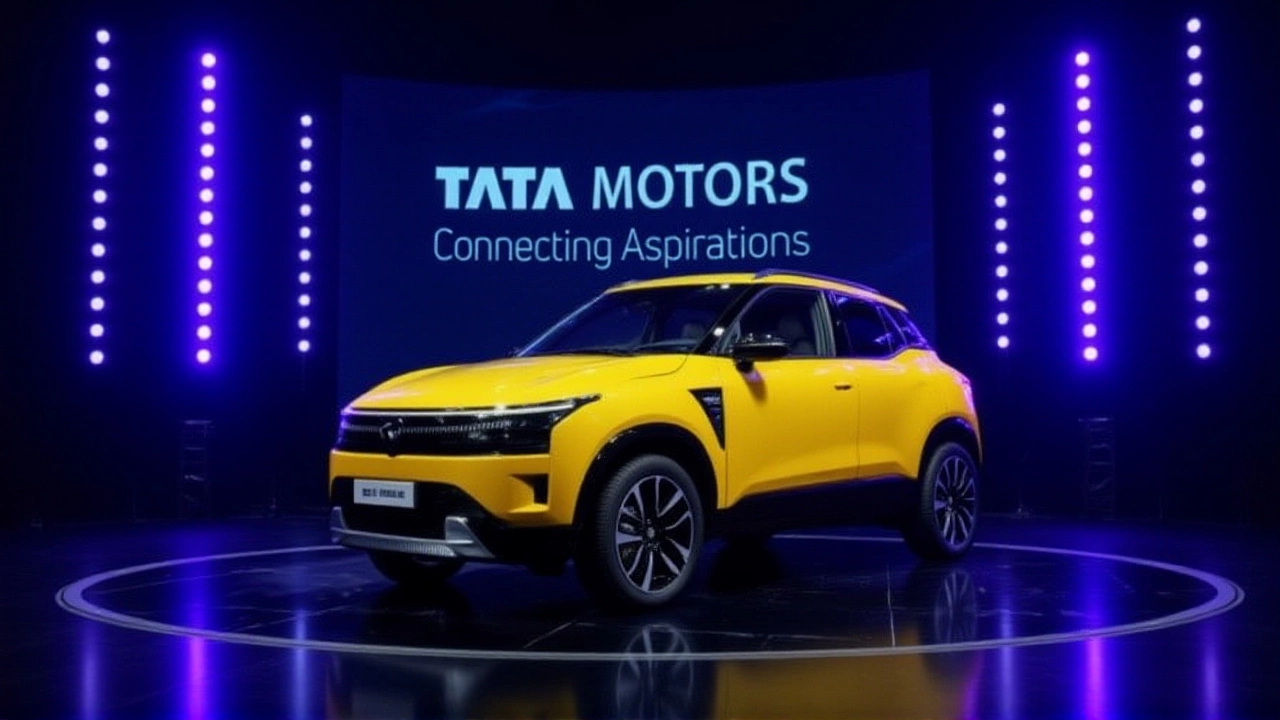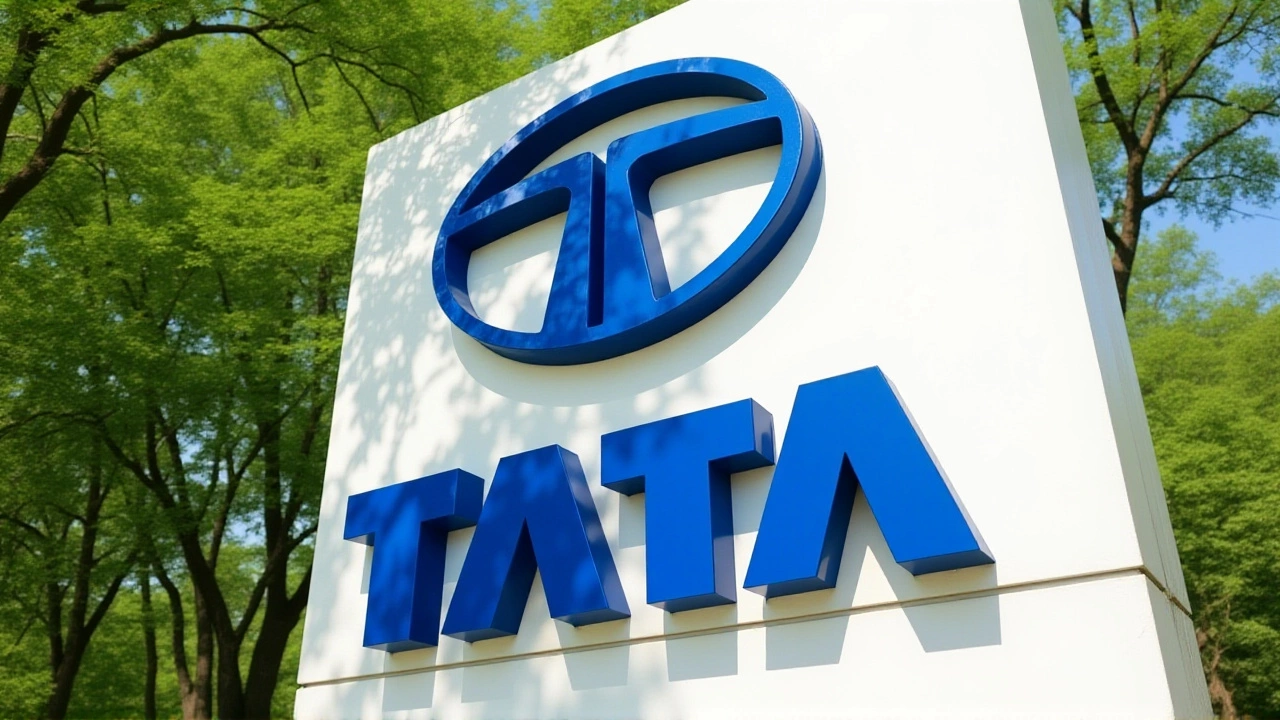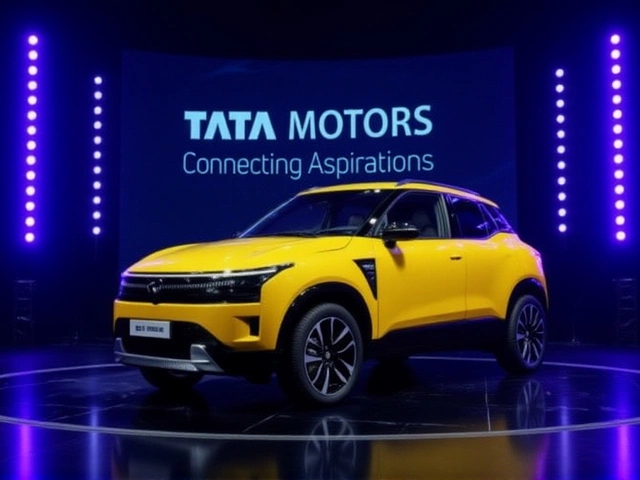
When Tata Motors Ltd. completed the split of its passenger and commercial vehicle businesses on October 14, 2025, investors suddenly found themselves holding two different stocks instead of one.
The move, announced by Guenter Butschek, chief executive officer, and backed by chairman Natarajan Chandrasekaran, was meant to sharpen focus on each segment. Yet the market reaction was anything but smooth.
Background: Why Tata Motors Chose to Split
Back in August 2024, the board of directors of Tata Motors decided to separate its commercial‑vehicles (CV) and passenger‑vehicles (PV) operations into distinct listed entities. The rationale was simple: each business faces different growth cycles, capital needs, and competitive pressures. By giving each unit its own balance sheet, the group hoped to unlock hidden value and make it easier for investors to bet on what they think will grow faster.
At the time, analysts noted that the commercial‑vehicle arm, which includes trucks and buses, contributed roughly 35% of the group’s revenue but lagged behind the passenger‑car segment in profit margins. The split also aligned with a broader trend in the Indian auto sector, where rivals such Mahindra & Mahindra and Maruti Suzuki have been tweaking their portfolios to stay ahead of electric‑vehicle disruption.
How the Demerger Was Structured
Under the Tata Motors DemergerMumbai, the original Tata Motors share stopped trading on the Bombay Stock Exchange (BSE) at ₹667.10 on Monday, October 13, 2025. Shareholders who held the stock in a demat account at the close of that day were entitled to receive one new share of the passenger‑vehicle entity for every old share they owned, with a face value of ₹2.
In addition, the CV arm would be listed as a separate company in November 2025, though the exact pricing and ticker were still being finalised at the time of writing.
Immediate Market Reaction
On Tuesday, October 14, the original Tata Motors ticker slumped roughly 40% across most trading platforms. The plunge reflected the mechanical split of the share into two parts and a recalibration of valuation multiples.
Conversely, the newly listed passenger‑vehicle shares opened on the BSE at ₹399 and quickly nudged up 5.62% to an intraday high of ₹421.45. The rise suggested that investors were rewarding the tighter focus, especially as Tata’s new‑energy sedan and SUV pipelines have been generating buzz.
In the week leading up to the demerger, Tata Motors’ stock had already slipped about 7% and was down roughly 11% since the start of 2025. The dramatic swing on the record date added fresh volatility, but many analysts said the longer‑term picture could still be positive.
Investor Perspectives
John Patel, a retail investor from Pune, told us that the 1:1 share swap felt “fair on paper,” but he was nervous about the CV entity’s uncertain timeline. “I’ll probably hold the passenger‑car shares and watch the commercial‑vehicle listing closely. If they price it right, there could be upside, but there’s risk,” he said.
On the other side, institutional player LIC Housing Finance Ltd. reportedly increased its stake in the passenger‑vehicle unit during the first few minutes of trading, betting that the segment’s superior margins would attract foreign fund inflows.
Potential Benefits and Risks
The demerger aims to give each unit clearer strategic direction. For the passenger‑vehicle arm, the expected benefits include faster decision‑making on electric‑vehicle platforms and the ability to launch premium models without waiting for board approval across the whole conglomerate. The commercial‑vehicle side, meanwhile, can pursue dedicated partnerships with logistics firms and may explore joint ventures in autonomous trucking.
However, separating the balance sheets also means both entities will now need to refinance debt independently. Tata Motors currently carries about ₹120 billion of long‑term borrowings; how that burden will be apportioned could affect credit ratings.

Regulatory and Listing Timeline
Regulators cleared the split after a detailed review by the Securities and Exchange Board of India (SEBI). The official record date – the cut‑off for entitlement – was set for October 14, 2025. The passenger‑vehicle shares began trading the same day, while the commercial‑vehicle listing is slated for the third week of November 2025, subject to final price discovery.
Investors should also note that dividend entitlements for the fiscal year ending March 2025 will be paid out by the original Tata Motors entity before the split completes. Post‑demerger, both new companies will declare separate dividends based on their own earnings.
What This Means for the Broader Auto Sector
Analysts see Tata’s move as a bellwether for other Indian manufacturers contemplating similar restructurings. If the passenger‑vehicle unit shows a clear earnings uplift, it could encourage rivals to spin off their electric‑mobility divisions.
Moreover, the split could make it easier for foreign investors to target specific exposure. Many global funds shy away from conglomerates because of opaque segmental reporting; a clean split removes that barrier.
Looking Ahead
In the months ahead, the spotlight will be on the commercial‑vehicle listing price and how the market assesses its growth prospects. Meanwhile, the passenger‑vehicle unit is expected to launch its first fully electric SUV by early 2026, a launch that could further boost its valuation.
For everyday shareholders, the key takeaway is simple: keep an eye on the new tickers, monitor earnings releases, and be prepared for short‑term volatility as the market digests two separate balance sheets.
Frequently Asked Questions
How will the demerger affect my existing Tata Motors shares?
If you held Tata Motors shares in a demat account at the close of October 13, 2025, you automatically received one share of the new passenger‑vehicle entity for each old share. The original share was delisted, and you now own the new ticker that began trading at ₹399.
When will the commercial‑vehicle unit be listed?
The commercial‑vehicle arm is scheduled to list on the BSE and NSE in the third week of November 2025. The final price will be set through a book‑building process overseen by SEBI.
What are the potential risks of holding the new passenger‑vehicle shares?
While the passenger‑vehicle unit has higher margins, it also faces intense competition in the EV space and will have to fund new product development without the cash flow support of the commercial‑vehicle business. A slowdown in global demand could pressure its earnings.
How did the market price the split on the record date?
On October 14, the original Tata Motors share fell about 40%, reflecting the mechanical division of the company into two parts. The newly listed passenger‑vehicle shares rose 5.62% to an intraday high of ₹421.45, indicating investor optimism for the focused business.
Will the demerger impact dividend payments?
Dividends for the fiscal year ending March 2025 will be paid by the original Tata Motors entity before the split is complete. After the demerger, each new company will declare its own dividend based on its earnings and cash‑flow position.


Comments
Post Comment